
Duke of Somerset, from the county of Somerset, is a title that has been created five times in the peerage of England. It is particularly associated with two families: the Beauforts, who held the title from the creation of 1448, and the Seymours, from the creation of 1547, in whose name the title is still held. The present dukedom is unique, in that the first holder of the title created it for himself in his capacity of Lord Protector of the Kingdom of England, using a power granted in the will of his nephew King Edward VI.
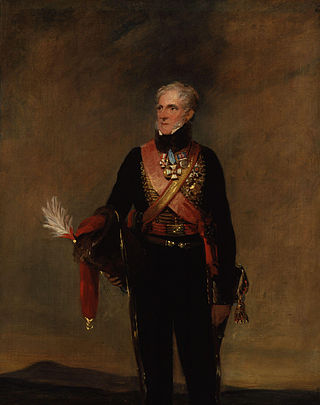
Henry William Paget, 1st Marquess of Anglesey, styled Lord Paget between 1784 and 1812 and known as the Earl of Uxbridge between 1812 and 1815, was a British Army officer and politician. After serving as a member of parliament for Carnarvon and then for Milborne Port, he took part in the Flanders Campaign and then commanded the cavalry for Sir John Moore's army in Spain during the Peninsular War; his cavalry showed distinct superiority over their French counterparts at the Battle of Sahagún and at the Battle of Benavente, where he defeated the elite chasseurs of the French Imperial Guard. During the Hundred Days he led the charge of the heavy cavalry against Comte d'Erlon's column at the Battle of Waterloo. At the end of the battle, he lost part of one leg to a cannonball. In later life, he served twice as Master-General of the Ordnance and twice as Lord Lieutenant of Ireland.

The titles of Earl of Hertford and Marquess of Hertford have been created several times in the peerages of England and Great Britain.
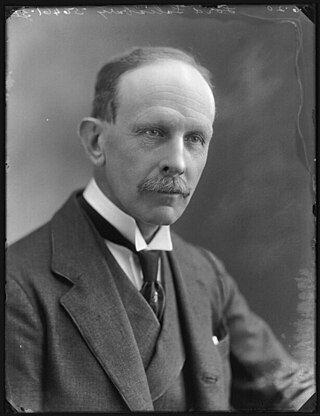
James Edward Hubert Gascoyne-Cecil, 4th Marquess of Salisbury,, known as Viscount Cranborne from 1868 to 1903, was a British statesman.

Earl of Yarmouth is a title that has been created three times in British history, once in the Peerage of England and twice in the Peerage of Great Britain. The first creation came in the Peerage of England in 1679 in favour of the politician and scientist Robert Paston, 1st Viscount Yarmouth. He had already been created Baron Paston and Viscount Yarmouth in the Peerage of England in 1673. He was the son of William Paston, who had been created a Baronet, of Oxnead in the County of Norfolk, in the Baronetage of England in 1641. Lord Yarmouth was succeeded by his son, the second Earl. He notably served as Treasurer of the Household between 1687 and 1689. He had no surviving male issue and the titles became extinct on his death in 1732.

Field Marshal Charles Moore, 1st Marquess of Drogheda, styled Viscount Moore from 1752 until 28 October 1758 and then as the 6th Earl of Drogheda until 2 July 1791, was an Irish peer and later a British peer, and military officer. He bore the colours of his regiment at the Battle of Culloden in April 1746 during the Jacobite risings and later commanded the 18th Light Dragoons during operations against the Whiteboys in Ireland. He also sat as Member of Parliament in the Irish House of Commons and, having served as Chief Secretary to the Lord Lieutenant of Ireland, he went on to become Master-General of the Irish Ordnance.

David William Murray, 3rd Earl of Mansfield, KT was a British army officer and peer, who served as Lord Lieutenant of Clackmannanshire from 1803 until his death.
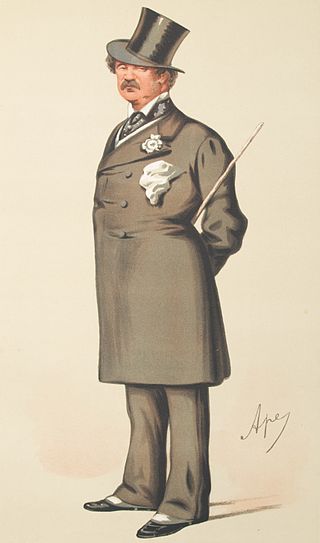
Lord Alfred Henry Paget was a British soldier, courtier and Liberal politician who sat in the House of Commons between 1837 and 1865.

Charles Robert Spencer, 6th Earl Spencer,, styled The Honourable Charles Spencer until 1905 and known as Viscount Althorp between 1905 and 1910, was a British courtier and Liberal politician from the Spencer family. An MP from 1880 to 1895 and again from 1900 to 1905, he served as Vice-Chamberlain of the Household from 1892 to 1895. Raised to peerage as Viscount Althorp in 1905, he was Lord Chamberlain from 1905 to 1912 in the Liberal administrations headed by Sir Henry Campbell-Bannerman and H. H. Asquith. In 1910, he succeeded his half-brother as Earl Spencer. He was married to Margaret Baring, a member of the Baring family.
This is a list of people who have served as Lord Lieutenant of the English county of Wiltshire. From 1750, all Lord Lieutenants have also been Custos Rotulorum of Wiltshire.
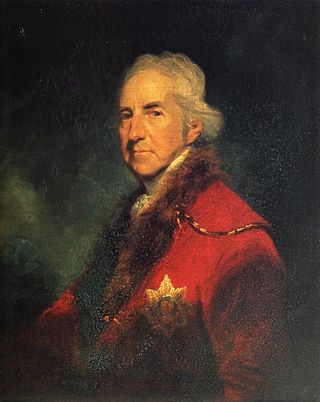
Francis Seymour-Conway, 1st Marquess of Hertford, KG, PC, PC (Ire) of Ragley Hall, Arrow, in Warwickshire, was a British courtier and politician who, briefly, was Viceroy of Ireland where he had substantial estates.
Hugh Edward Conway Seymour, 8th Marquess of Hertford was a British aristocrat. He was the son of Brig.-Gen. Lord Henry Charles Seymour and Lady Helen Grosvenor. He was the grandson of both Hugh Seymour, 6th Marquess of Hertford and Hugh Grosvenor, 1st Duke of Westminster.

Captain Hugh de Grey Seymour, 6th Marquess of Hertford, styled Earl of Yarmouth from 1870 to 1884, was a British soldier, courtier and Conservative politician. He notably served as Comptroller of the Household between 1879 and 1880.

Francis George Hugh Seymour, 5th Marquess of Hertford, known as Francis Seymour until 1870, was a British army officer, courtier and Conservative politician. He served as Lord Chamberlain of the Household under Benjamin Disraeli from 1874 to 1879.

Captain Richard Seymour-Conway, 4th Marquess of Hertford KG was an English aristocrat, with extensive land holdings in the south of England and the north of Ireland, and sometime politician who spent his life in France devoted to collecting art. From birth to 1822 he was styled Viscount Beauchamp and from 1822 to 1843 Earl of Yarmouth.

Francis Charles Seymour-Conway, 3rd Marquess of Hertford,, styled Viscount Beauchamp between 1793 and 1794 and Earl of Yarmouth between 1794 and 1822, of Ragley Hall in Warwickshire and of Sudbourne Hall in Suffolk, was a British Tory politician and art collector.

Francis Ingram-Seymour-Conway, 2nd Marquess of Hertford, KG, PC, PC (Ire), styled The Honourable Francis Seymour-Conway until 1750, Viscount Beauchamp between 1750 and 1793, and Earl of Yarmouth between 1793 and 1794, was a British peer and politician. He held seats in the Irish House of Commons from 1761 to 1776 and in the British House of Commons from 1766 to 1794. He served as Chief Secretary for Ireland under his father. He subsequently held positions in the Royal Household, including serving as Lord Chamberlain between 1812 and 1822.
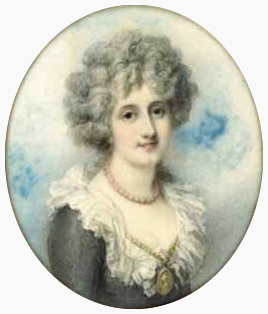
Maria Emilia Seymour-Conway, Marchioness of Hertford, nicknamed "Mie-Mie", was a British noblewoman of Italian descent.

Alice Cornelia Thaw was an American philanthropist and, upon her marriage to George Seymour, Earl of Yarmouth, the Countess of Yarmouth.
Mary Seymour, Marchioness of Hertford, formerly the Honourable Mary Hood, was the wife of Hugh Seymour, 6th Marquess of Hertford.

















